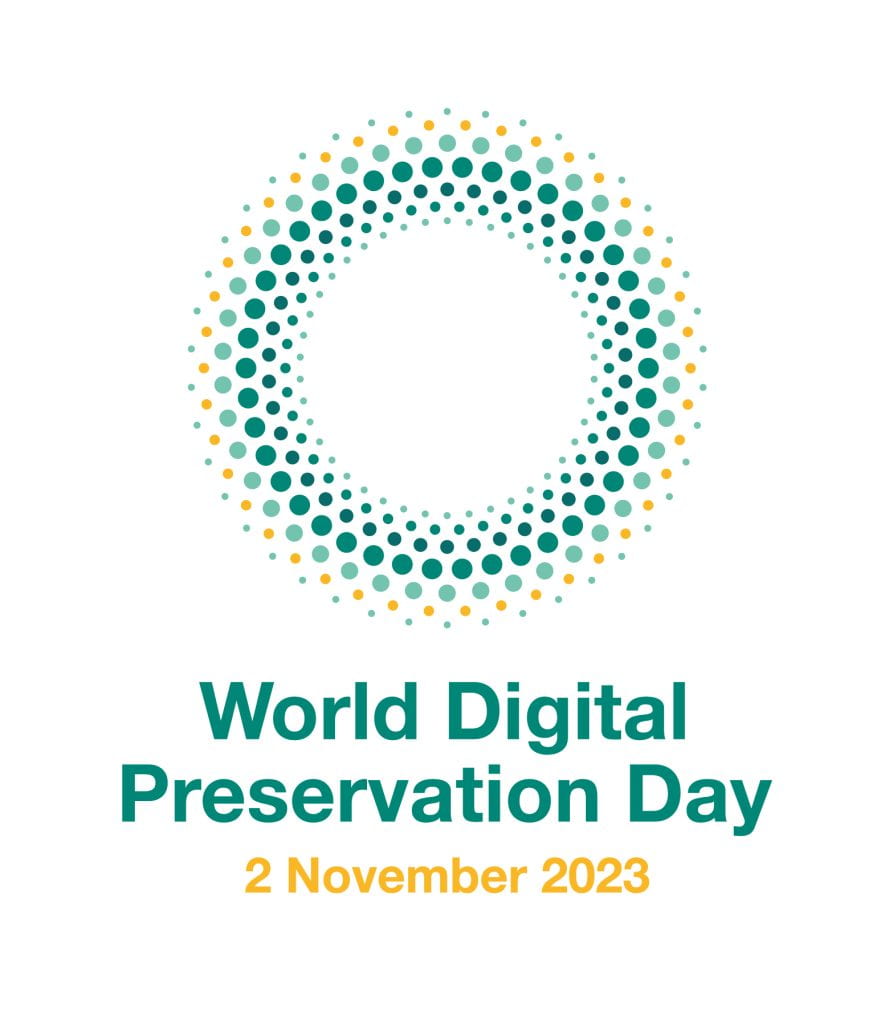
Emma Hancox, Digital Archivist writes about World Digital Preservation Day and our recent steps in digital preservation.
Today (2nd November) is World Digital Preservation Day: an international date to celebrate digital preservation. This year’s theme is ‘Digital Preservation: A Concerted Effort’ and the focus is on the interactions and relationships that make for success in this area. Digital preservation is a key part of the work we do in Special Collections and Theatre Collection to ensure our researchers have access to important digital collections now and in the future.
When you think of archives, old handwritten documents such as letters, diaries, minute books or even a photograph album probably come to mind. Materials such as these created in hard copy in the past (which form a large part of our collections) are almost always created digitally nowadays. Organisations and individuals who approach us to enquire about depositing their archives are increasingly offering us material in digital form and it is imperative that we collect and preserve this material to have a comprehensive archive in the future.
As well as these original or so-called born-digital materials, we hold digital copies or digital surrogates of some of the physical material in our collections. These may be digital photographs of the hard copy material we hold or digital audio or video files from carriers such as cassette or video tapes which have been digitised because of their fragility and the risk of loss.
Although digital archives are still archives, and there are many similarities with our physical collections in terms of how we manage them, they have their own distinct set of challenges. It is very easy to create massive amounts of digital files and to save multiple copies of the same thing. Traditionally archivists appraise collections to select the material suitable for preservation, but this task becomes much more difficult and time consuming in a digital environment. Being able to validate files and check their integrity (whether or not they have changed over time) is vital as we need to be able to demonstrate the authenticity of the materials in our care. File format obsolescence and software dependencies are other potentially problematic areas. A particular file format may be more at risk than another and we cannot always ensure that we will have access to the correct software to be able to make a particular file accessible.
So what are we doing to improve our capacity to deal with digital archives? Towards the end of 2018 I was recruited as the first Digital Archivist and the first member of staff with a completely digital preservation-focused role. Since then, we have joined the Digital Preservation Coalition meaning we are part of an international digital preservation community and network, which is a brilliant opportunity for training, reciprocal support and learning. With the support of the DPC we participated in a booksprint in 2019, which enabled us to write the digital preservation policy that underpins our everyday decision making and an accompanying case study. 2019 was also the year we acquired Preservica as our digital preservation system and since then we have been familiarising ourselves with different types of ingest workflows and ingesting collections with the aim of making them accessible online via Universal Access.
In 2021 we were fortunate to be successful in our application to be one of the partners in the Bridging the Digital Gap scheme run by The National Archives making it possible for us to have a Digital Archives Trainee working with us. Our trainee progressed to the role of Digital Archives Assistant following the traineeship and his work has enabled us to expand our capabilities in terms of the amount of material ingested, compiling a digital asset register, being able to experiment with more complex workflows, using Python to assist with tasks as well as expand into other areas such as web archiving and the consideration of issues around the management of 3D data.
World Digital Preservation Day gives us the opportunity to look back at what we have achieved so far and to think about our future steps. It also reminds us that we are part of an international community facing similar challenges and obstacles and that sharing with each other is the key to overcoming them.
